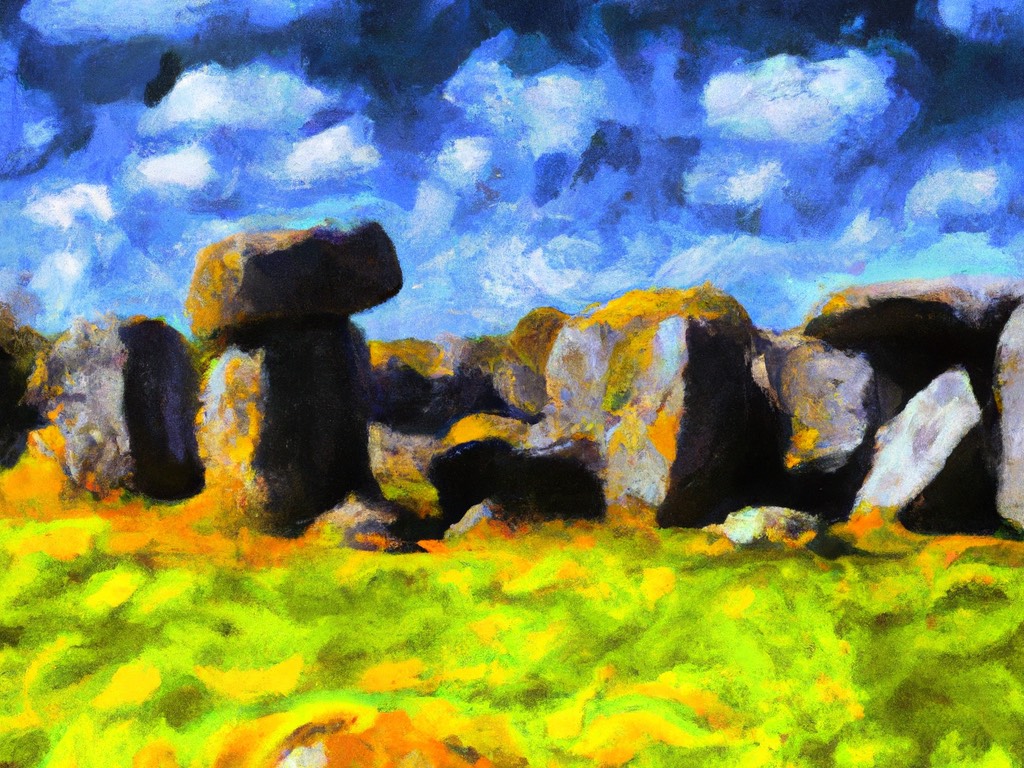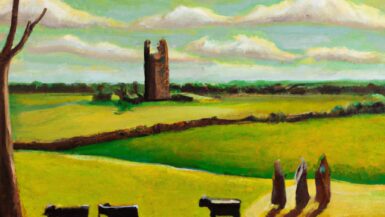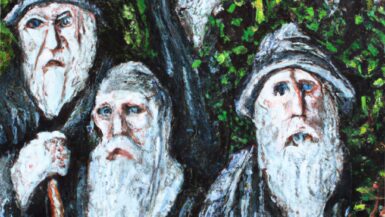The Neolithic Revolution marks a transformative period in human history. As people began transitioning from nomadic hunter-gatherer lifestyles to settled agricultural communities, the entire fabric of society underwent a seismic shift. Nowhere is this more evident than in the emerald landscapes of Ireland, where the Neolithic era introduced farming, erected megalithic monuments, and set the foundation for a complex societal structure.
Embracing Farming: Ireland’s Green Revolution
The Neolithic Revolution in Ireland, which commenced around 4000 BC, was underscored by the adoption of agriculture. With this shift:
- Crops and Livestock: Early Irish farmers started cultivating cereals such as barley and wheat, ushering in a period of sedentary living. Alongside crop cultivation, they began domesticating animals like cattle, sheep, and pigs.
- Technological Advancements: The move towards farming prompted technological innovations. Pottery was introduced, serving both as cooking utensils and storage containers. Stone tools became more refined, aiding in both farming and construction tasks.
- Land Alteration: The landscape of Ireland began changing. Forests were cleared to make space for farmlands, leading to a structured modification of the environment.
Megalithic Monuments: Ireland’s Neolithic Architectural Marvels
One of the most distinguishing features of the Neolithic era in Ireland is the construction of megalithic monuments. These grand stone structures served a variety of purposes, from religious to communal:
- Portal Tombs: Often referred to as “dolmens”, these structures comprised large capstones supported by upright stones. The renowned Poulnabrone dolmen in Co. Clare exemplifies this architectural style.
- Court Tombs: These are characterized by a courtyard area leading into a burial chamber, often covered by cairns. Found predominantly in the northern parts of Ireland, they attest to burial rituals and ceremonies of the era.
- Passage Tombs: Among the most iconic Neolithic structures, passage tombs like Newgrange in Co. Meath are intricately designed, featuring long passages leading to central burial chambers. Richly decorated with megalithic art, they highlight the era’s artistic flair.
Evolving Social Structures: The Birth of Hierarchies
The Neolithic Revolution was not just about technological and architectural advancements; it also ushered in new societal dynamics.
- Settled Communities: With the advent of farming, people began establishing permanent settlements. This led to a sense of community and belonging, with shared tasks and responsibilities.
- Rise of Specializations: Not everyone was involved in farming. The need for tools, pottery, and construction led to specialized roles, such as craftsmen and builders.
- Emergence of Hierarchies: As settlements grew and resources became centralized, societal hierarchies began to form. Those controlling resources or possessing specialized skills often held higher statuses.
Spiritual and Cultural Flourishing
The Neolithic period in Ireland was marked by a burgeoning cultural and spiritual expression.
- Megalithic Art: The intricate carvings on passage tombs and other stone structures depict spirals, circles, and other motifs, suggesting a rich symbolic or religious significance.
- Burial Practices: The construction of massive tombs indicates not just architectural prowess but also intricate burial rituals and beliefs about the afterlife.
- Communal Gatherings: Large megalithic structures may have served as communal gathering spots, facilitating cultural and religious ceremonies.
The Economic Dimension: Trading and Expanding Networks
The settled nature of Neolithic life in Ireland didn’t mean isolation. Evidence suggests:
- Local Trade: Communities engaged in trade, exchanging goods such as pottery, tools, and even raw materials.
- Wider Networks: There’s evidence to suggest Ireland’s Neolithic communities had links with societies in Britain and even mainland Europe, indicating a broader trading and communication network.
The Environmental Impact: A Changing Landscape
The Neolithic Revolution significantly impacted Ireland’s environment.
- Deforestation: Large-scale forest clearance made way for farmlands. This not only changed the landscape but also affected local flora and fauna.
- Land Management: The creation of permanent settlements led to structured land management practices. Terrains were modified to suit agricultural and habitation needs.
The Neolithic Legacy: Setting the Course for Future Generations
The Neolithic era in Ireland laid the groundwork for subsequent Bronze and Iron Age civilizations. The settled communities, technological advancements, social structures, and cultural practices became foundational elements for the future development of Ireland.
In sum, the Neolithic Revolution in Ireland was a multifaceted transformation that touched every aspect of human existence. From the fields where the first crops were sown, to the megalithic monuments that dot the landscape, this period remains a significant chapter in the annals of Irish history. Through farming, monumental constructions, and evolving societal norms, Ireland’s Neolithic inhabitants set the stage for the millennia of history that would follow.






Leave a reply